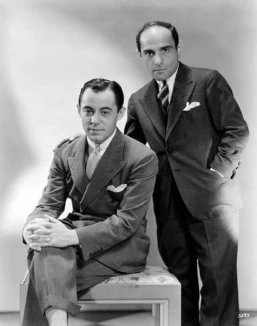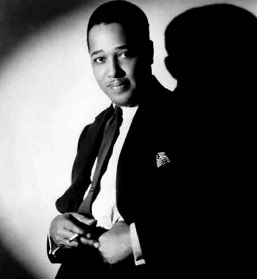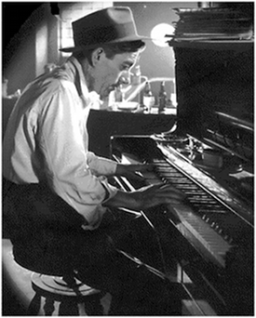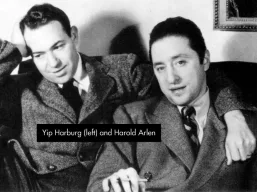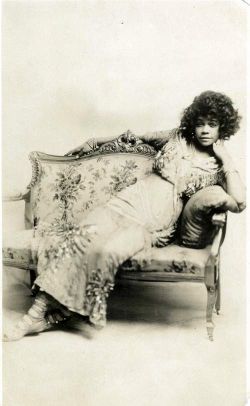Hooray for Hollywood, Bob Burns, and bazookas
______________________________
page originally published on 13 February 2013; revised in January 2016; latest edit, 16 March 2023
______________________________
From the song “Hooray for Hollywood” (m. Richard Whiting, w. Johnny Mercer), introduced in the 1937 film Hollywood Hotel:
Hooray for Hollywood
That phony super-Coney Hollywood
They come from Chillicothes and Paducahs with their bazookas
To get their names up in lights
lyric: AllMusic, International Lyrics Playground
Chillicothe [pronounce Chillicothe (forvo.com)] — According to Answers.com, “Illinois, Iowa, Missouri, Ohio, and Texas all have cities/communities named Chillicothe.” However, the pronounciation of the name varies.
The Wikipedia article on Chillicothe, Missouri notes that both cities named in the song were misspelled in the original lyric:
The 1937 song (lyrics by Johnny Mercer and music by Richard A. Whiting) contains in the second verse: “Hooray for Hollywood! That phony, super Coney, Hollywood. They come from Chilicothes and Padukahs…” Both cities were misspelled in the original lyrics. The correct spellings are “Chillicothe” and “Paducah”.
Bazookas –Why would men, women, or children ambitious for success in the film industry c.1937 carry brass musical instruments several feet in length incorporating telescopic tubing like the trombone when they left their small towns to try to make it in Hollywood? Maybe they didn’t.
 Bazookas was a very common slang term for a woman’s breasts, especially large ones if I recall correctly, when I was growing up in the 1960s and ’70s. I heard it often on TV (talk and variety shows, sitcoms, films) and in the schoolyard. I’m guessing that such usage was already common by 1937. A peek into urbandictionary.com tells me that the term “bazookas” still has currency as slang and ordinarily denotes a woman’s breasts. Wiktionary gives its primary definition as “(slang, sexuality) breasts of a woman.”
Bazookas was a very common slang term for a woman’s breasts, especially large ones if I recall correctly, when I was growing up in the 1960s and ’70s. I heard it often on TV (talk and variety shows, sitcoms, films) and in the schoolyard. I’m guessing that such usage was already common by 1937. A peek into urbandictionary.com tells me that the term “bazookas” still has currency as slang and ordinarily denotes a woman’s breasts. Wiktionary gives its primary definition as “(slang, sexuality) breasts of a woman.”
It’s possible that Mercer was employing a slang term for women’s breasts, as suggested above. But let’s consider other possible meanings of the word “bazookas” as used in the lyric of “Hooray For Hollywood”:
1. The brass musical instrument called the bazooka — It’s unlikely that men, women, or children hoping to become film actors and actresses might have
 a.) typically owned one of these instruments, despite the facts that simple bazookas could be constructed, according to Wikipedia, “with scavenged materials: two pipes and a funnel,” and the instrument had been popularized by musical comedian Bob Burns during the 1930s, or
a.) typically owned one of these instruments, despite the facts that simple bazookas could be constructed, according to Wikipedia, “with scavenged materials: two pipes and a funnel,” and the instrument had been popularized by musical comedian Bob Burns during the 1930s, or- b.) routinely carried the instrument with them when they left their hometowns for Hollywood.
From Wikipedia: The bazooka is a brass musical instrument several feet in length which incorporates telescopic tubing like the trombone. Often, people construct very simple bazookas with scavenged materials: two pipes and a funnel. From its start within a lipreed mouthpiece (which may consist of nothing but the bare tube or employ a mouthpiece which is handmade to emulate one from a low brass instrument), the air column expands into a wide length of pipe which slides freely around a narrower length of pipe which itself terminates in a widely flaring bell. [read more]
2. bazooka = bazoo = mouth?
From the Online Etymology Dictionary:
bazooka (n.) “metal tube rocket launcher,” 1942, from name of a junkyard musical instrument used (c.1935) as a prop by U.S. comedian Bob Burns (1896-1956); extension of bazoo, slang for “mouth” or “boastful talk” (1877), probably from Dutch bazuin “trumpet.”
3. bazooka = bazoo = kazoo?
In a WordOrigins.org Discussion Forum thread on the etymology of the word bazooka, it is considered a likely extension of bazoo, which is in the same thread reported to have “kazoo” as an equivalent American slang term for “mouth.” Meanwhile, the musical instrument known as the kazoo has also sometimes been referred to by the names gazoo, gazooka, (and “bazouka” by a group of miners, c. 1926).
From the history section of the Wikipedia page on the kazoo:
The first documented invention of [the] kazoo was by an American inventor, Warren Herbert Frost,[2] who named his new musical instrument kazoo in his patent #270,543 issued on January 9, 1883. In the patent he says, “This instrument or toy, to which I propose to give the name “kazoo”…”[3] The shape of the kazoo at the time does not look like the kazoos as we know today. The modern, submarine-shaped kazoo, which was also the first metal kazoo, was patented by George D. Smith of Buffalo, New York, May 27, 1902.[2][4][read more]
No word about the second documented invention of the kazoo.
4. The shaped charge rocket launcher, an antitank weapon known familiarly as a bazooka, was not introduced until 1942, five years after the term “bazooka” was used in the song “Hooray for Hollywood.” A rocket propels a shaped charge grenade out of the cylindrical weapon which rests on the shoulder of the soldier firing it. The nickname arose due to its vague similarity in appearance to the musical instrument.
5. Bazooka bubble gum must be excluded because it was first marketed after WWII, in 1947, according to Wikipedia.
6. Perhaps Mercer intended the word bazooka(s) in the lyric of “Hooray for Hollywood” as a representative shtick: a gimmick, or a special talent, style, eccentricity, physical characteristic, etc., which film career candidates might hope to use to their advantage in Hollywood. Playing the bazooka could be considered either one of Bob Burns’ shticks (gimmicks), or an element in his overall shtick (stage persona) adopted when performing as the comical, storytelling rustic bumpkin The Arkansas Traveller.
_________________________
Addendum, 7 January 2016:
I’m leaning a bit more toward the explanation put forth in #6 above since I discovered that Bob Burns was among the performers who in the 1936 film Rhythm on the Range helped Bing Crosby introduce Johnny Mercer’s first big Hollywood hit after his move to Tinseltown in 1935, “I’m an Old Cowhand (from the Rio Grande).”
I’m an Old Cowhand (from the Rio Grande) words and music by Johnny Mercer — performed by Bing Crosby, Leonid Kinskey, Martha Raye, Bob Burns, and Louis Prima, accompanied by The Sons of the Pioneers, in Rhythm on the Range (1936)
.
________________________
Although Johnny Mercer wrote both words and music for a number of songs, he is known primarily for his lyrics. Songbook presently has three index pages of selected standards with lyrics by Johnny Mercer, covering sequential time frames. Links to 15 feature pages on individual standards are collectively included in parts 1 and 3:








